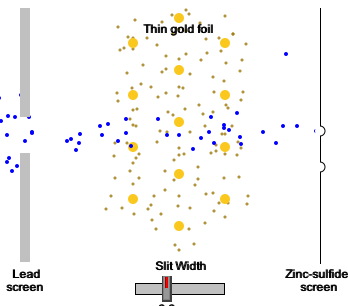Feel free to copy, paste, modify, link from your web page...and tell the world that this page was built by Maria Eric Antonio Diana José Jozef
We would like to thank two wise men, Mike and Rolf, who provided us with their invaluable comments.
Feedbacks are welcome. Also donations are accepted.:-)
 Lesson
1:
Lesson
1:
Looking for the invisible world
How do scientists work? - how do we detect things we will never see? - what methods do we have? Scientists usually look for the simplest possible theory to explain a maximum number of things.
Objectives
- To develop scientific inquiry skills.
- To know that nature is made of particles.
- To know how scientists manage to get information from inside the atom.
1. Do you know how big a cell is, a chromosome, an atom ?... Let's start with some questions about it.
- Look inside the fly: a matching exercise.
- A humoristic approach of a contemporary wise man, Homer Simpson.
- A complete view of the scale of the universe through 'Secret Worlds: The Universe Within'.
- Activity sheet.


2. The physicists' problem: how to get information on an 'invisible particle'?.
- Try this game. Click here and try to guess the shape of the hidden object. (Circle, triangle and dish)
- Activity sheet.


- Answer.

 3.
Rutherford's Experiment.
3.
Rutherford's Experiment.
Ernst Rutherford, wanted to know more abut how atoms are. He fired alpha
particles (from a radioactive substance) onto a gold foil... His results
were unexpected. Repeat his experiment and see what conclusions you can
draw from the results.
- Activity sheet.


The answer: Rutherford's model. Click here.
4. Today's Physics.
But 100 years after Rutherford, scientific ideas are different.
We know that nucleus is made of particles called neutrons and protons.
But protons and neutrons are made of quarks. We do not yet know if quarks
are elementary particles.
Now, if you are sure to understand the basic rules on how to make an atom, open the link and try to follow the instructions to build a carbon atom.
5. Tomorrow's physics. What are made Quarks of?
Physicist at CERN know about particles because they accelerate and make
them collide with each other. They have to build enormous detectors
to collect infomation
from the colisions.
Try these two games:
Take a look at a detector (CMS) picture.
The picture at the top of the page is a prediction of a trace obtained by particles formed after a collision. Larger detectors are now put in place at CERN to further study how particles are made.
It will take 5 to 10 years for the results of these experiments to be known. You could be the physicist that will find an answer to CERN's most wanted questions such as:
- "What is matter?"
- "What holds matter together?"
- "How to make anti-matter?"
